Event Virtual
Chemicals in the Plastics Treaty: Perspectives on Protecting Human Health

28 Mar 2024
12:00–13:30
Venue: Online | Webex
Organization: International Pollutants Elimination Network, Geneva Environment Network
This event, co-organized with IPEN, within the framework of the Geneva Beat Plastic Pollution Dialogues, provided guidance and increase clarity on why it is crucial to regulate chemicals to ensure that the plastics treaty will ensure the protection of human health.

About this Event
This event provided guidance and increase clarity on why it is crucial to regulate chemicals to ensure that the plastics treaty will ensure the protection of human health. The session will highlight what approaches to regulation are possible and answer frequent questions delegates may have around chemicals and plastics. It also provided areview how other MEAs regulate chemicals in plastics and possible outcome of the negotiations.
The event was held in English, with interpretation to French and Spanish. Transcript is available for other languages.
Geneva Beat Plastic Pollution Dialogues

The world is facing a plastic crisis, the status quo is not an option. Plastic pollution is a serious issue of global concern which requires an urgent and international response involving all relevant actors at different levels. Many initiatives, projects and governance responses and options have been developed to tackle this major environmental problem, but we are still unable to cope with the amount of plastic we generate. In addition, there is a lack of coordination which can better lead to a more effective and efficient response.
Various actors in Geneva are engaged in rethinking the way we manufacture, use, trade and manage plastics. The Geneva Beat Plastic Pollution Dialogues aim at outreaching and creating synergies among these actors, highlighting efforts made by intergovernmental organizations, governments, businesses, the scientific community, civil society and individuals in the hope of informing and creating synergies and coordinated actions. The dialogues highlight what the different stakeholders in Geneva and beyond have achieved at all levels, present the latest research and governance options.
Following the landmark resolution adopted at UNEA-5 to end plastic pollution and building on the outcomes of the first two series, the third series of dialogues will encourage increased engagement of the Geneva community with future negotiations on the matter.
Speakers
By order of intervention.

H.E. Amb. Luis VAYAS VALDIVIESO
Chair, INC Plastic Pollution, Ecuador
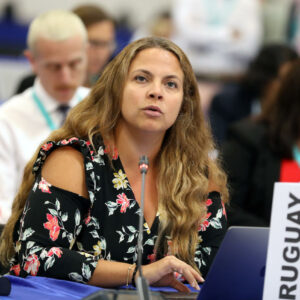
Valentina SIERRA
Permanent Mission of Uruguay to the United Nations in Geneva

Andrea GORE
Professor of Pharmacology & Toxicology, University of Texas at Austin
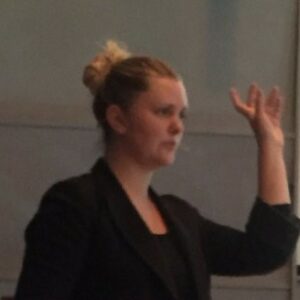
Therese KARLSSON
Science and Technical Advisor, IPEN

Kei OHNO WOODALL
Senior Coordination Officer, Basel, Rotterdam and Stockholm Conventions Secretariat

Michel TSCHIRREN
Head, Global Affairs Section, Federal Office for the Environment, Switzerland
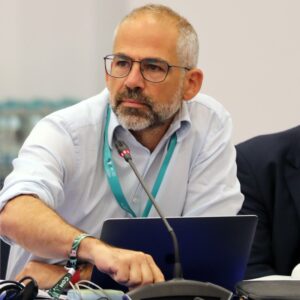
Vito BUONSANTE
Policy & Technical Advisor, IPEN

Griffins OCHIENG
Executive Director, Centre for Environmental Justice and Development | Co-chair, IPEN Toxic Plastic Working Group | Moderator
Summary
Opening | Griffins OCHIENG | Executive Director, Centre for Environmental Justice and Development | Co-chair, IPEN Toxic Plastic Working Group | Moderator
- An agreement on chemicals is crucial to realizing the treaty’s objective to promote and protect human health.
- The briefing aims to improve the understanding of the issues related to chemical risks as well as chemical regulations.
Welcome | H.E. Amb. Luis VAYAS VALDIVIESO | Chair, INC Plastic Pollution, Ecuador
- While no official intersessional work has been agreed upon at INC-3, work has been conducted by member states in regional consultations, and informal virtual meetings with the heads of delegations, civil society representatives, NGOs, private sector and the scientific community, who also led various of these meetings.
- Around 4,000 participants will be in Ottawa for INC-4, 75% of which are observers. This shows the engagement within the process, but will represent a challenge to ensure everyone can contribute to the process.
It is important that after INC-4 we get a mandate for formal intersessional work.
- INC4 negotiations must be strategically used as the time is limited. Complexively, around 85 hours of negotiations are allocated between and INC5.
-
different topics.
-
As highlighted in the Scenario note, we hope to establish at INC-4 a legal drafting group.
- The INC process must be inclusive, transparent and constructive.
Member State Perspective on Needs for Chemicals Regulation in the Treaty | Valentina SIERRA | Permanent Mission of Uruguay to the United Nations in Geneva
- UNEA Resolution 5/14 gave us a mandate to start negotiations for a treaty on plastics, based on a comprehensive approach that would address the full life cycle of plastics and would promote their sustainable production and consumption.
- As plastics are made of chemicals, inevitably the treaty will need to control their composition and the pollution from plastics throughout the lifecycle.In particular, a non-toxic circular economy begins with the design of products that reduce material input, avoids the use of toxic chemicals, and enables reuse and recycling.
- If plastics that contain toxic additives and are recycled will create new hazardous products posing new risks to and long-term adverse effects on human health and the environment.
- The plastic treaty must include obligations for reducing the production of primary plastics polymers and for effectively phasing out, or severely restricting the production and/or use of specific polymers, chemicals and plastic products that are harmful to the environment and human health, that are problematic because they impede circularity or that have a high risk of release into the environment.
- It must be ensured that a potential replacement of polymers, chemicals and plastic products, by other alternatives and substitutes, will not lead to any comparable kind of harm to human health or the environment. And that they will be affordable and accessible to developing countries.
- These are ambitious objectives and, as we learn that plastics contain thousands of chemicals and that many of them are of potential concern we need to have practical ways to regulate them.
- As plastics are traded around the world as materials, in products and as waste, understanding what is the chemicals composition of these plastics is challenging but necessary to protect our health.
Health Impacts of Plastics: Focus on Bisphenols and Phthalates | Andrea GORE | Professor of Pharmacology & Toxicology, University of Texas at Austin
- The latest Endocrine Society and IPEN guide on Endocrine Disrupting Chemicals: Threats to Human Health discusses, among other things, EDCs in plastics.
- EDCs are probably the biggest health threat from plastics as they act by interfering with hormones. When the functions played by hormones are perturbed by EDCs, health effects such as diabetes, obesity and cardiovascular diseases, reproductive problems, behavioral problems and certain cancers can occur.
- There is consensus on how important environmental factors are in disease prevalence, with evidence coming from three levels:
- Studies in labs using cells to look at the effects of chemicals on different hormone pathways.
- Animal models where we can work to prove causes and effects between exposures and the development of one of these diseases.
- Human epidemiology, population studies that link how much body tissues content relates to these chemicals. The studies look at EDCs and found that plastics and plasticizers such as bisphenols and phthalates probably have the strongest evidence as acting as EDCs and causing these effects.
- Plastics not only threaten all people and wildlife, they are particularly problematic during certain key points of life during pregnancies for mothers and babies and postnatal development and puberty and all times when hormones are changing and when the sensitivity of the body to hormones is at its highest.
- In the world of endocrinology, we use the phrase “the timing makes the poison” because it is not just how much, but when the exposures are happening that probably have the greatest effects. Indeed, even extraordinarily low-level exposures can have biological effects at specific times. EDCs effects can have impacts on multiple generations.
- Bisphenols are threats because people are exposed to them through many roots including reusable food and beverage containers, medical and sports equipment, eyeglass lenses, thermal paper receipts, plastic water pipes and adhesives paints and lacquers amongst other exposures.
- We are also ubiquitously exposed to phthalates through contact with PVC, personal care products, medications, supplements, food and beverage packaging and processing materials, children’s toys, and medical tubing.
- Exposure to bisphenols and phthalates is ubiquitous internationally. Even if they do not last in the body very long, we are constantly being re-exposed to these chemicals. Even their replacements of those chemicals do not remove the adverse health effects, making them ‘regrettable substitutions’.

Frequently Asked Questions on Plastics and Chemicals | Therese KARLSSON | Science and Technical Advisor, IPEN
Do we need to manage production to protect human health in the environment?
- Yes, because this is the reason why we are having these negotiations. There has been a global realization that the way that we are producing plastics today is unsustainable, it has surpassed planetary boundaries and it is causing harm throughout their life cycle to both the environment and to human health.
- The Plastics Treaty provides an opportunity to protect human health and the environment.
- This will require eliminating toxic chemicals and controlling plastic production volumes.
Would not plastics recycling be a good solution?
- Recycled plastics come with a large amount of toxic chemicals because during the recycling process, a combination of different materials that have an even more complex mix of chemicals is released.
- Recycled plastics are more toxic than virgin plastics, which means it is not a suitable solution and that the controls need to happen earlier in the life cycle.
How are plastics made?
- Plastics are a combination of carbon and chemicals both coming from fossil fuels. Even if they are biobased, they come with very similar concerns.
- Plastic consists of different types of chemicals. There are monomers when combined, they create polymers, the backbone of plastics.
- Additives are added to create specific properties in the materials, for example, flame retardants, UV stabilizers and colors.
- Aside from these three intentionally added chemicals monomers, polymers and additives there are also non-intentionally added substances or NIAs. An example can be for the product degradation. Therefore, chemicals during the material’s life degrades to other chemicals or it can be chemicals that come from recycled plastics.
Why should a Global Plastics Treaty address toxic chemicals?
- Because plastics are chemicals, many of which are toxic and not internationally regulated. Only a very small portion are internationally regulated throughout their life cycle but they still spread internationally in plastic materials and harm human health and the environment.
What are some of the chemicals that should be included in the first list of chemicals to be regulated under the treaty?
- Bisphenols and phthalates are known for their toxicity.
- Styrene, a known carcinogen and EDCs, which can leach from polystyrene and lead to the formation of toxic byproducts, for example when PVC is burned, it leads to the formation of dioxins.
- For chemicals of concern, we need to take a hazard-based approach because for many of these chemicals, the toxicity of the chemical is enough to warrant a protective regulation. The opposite approach – a risk-based approach – is outdated and it disregards things such as endocrine disruption and it requires long costly evaluations that are not possible to envision considering the different exposure pathways throughout the life cycle of plastics.
- In terms of the Plastics Treaty, it is important to prioritize those polymers that have intrinsic toxic properties and should be regulated as chemicals of concern.
Protecting human health and the environment will require measures to control production and volumes, the elimination of toxic chemicals and provisions that ensure transparency and traceability across the full life cycle of plastics to have a safer and more sustainable use of plastics in the future.
BRS Conventions and Chemicals in Plastics, State of Play, and Future Perspectives | Kei OHNO WOODALL | Senior Coordination Officer, Basel, Rotterdam and Stockholm Conventions Secretariat
How the existing mechanisms are addressing chemicals and what are the gaps?
In 2023, the Basel, Rotterdam and Stockholm Conventions published two important reports on the topic:
- Chemicals in Plastics, developed together with UNEP, provided a state of knowledge on chemicals in plastics and based on compelling scientific evidence calls for urgent action to address chemicals in plastics as part of the global action on plastic pollution.
- BRS Global Governance of Plastics and Associated Chemicals highlights how chemicals in plastics are addressed in the existing mechanisms and what synergies and opportunities currently exist.

Stockholm Convention on Persistent Organic Pollutants
-
- POPs are described within the convention text with four main criteria: persistence, bioaccumulation, adverse effect, and potential for long-range environmental transport.
- Adverse effects include endocrine-disrupting chemicals.
- The implication of listing chemicals in annexes must be carefully assessed:


- In the process for listing a new chemical, step three is the most important part whereby the POPs Review Committee determines whether the chemical is likely, as a result of its long-range environmental transport to lead to significant human health adverse under environmental effects. The process takes around four years.
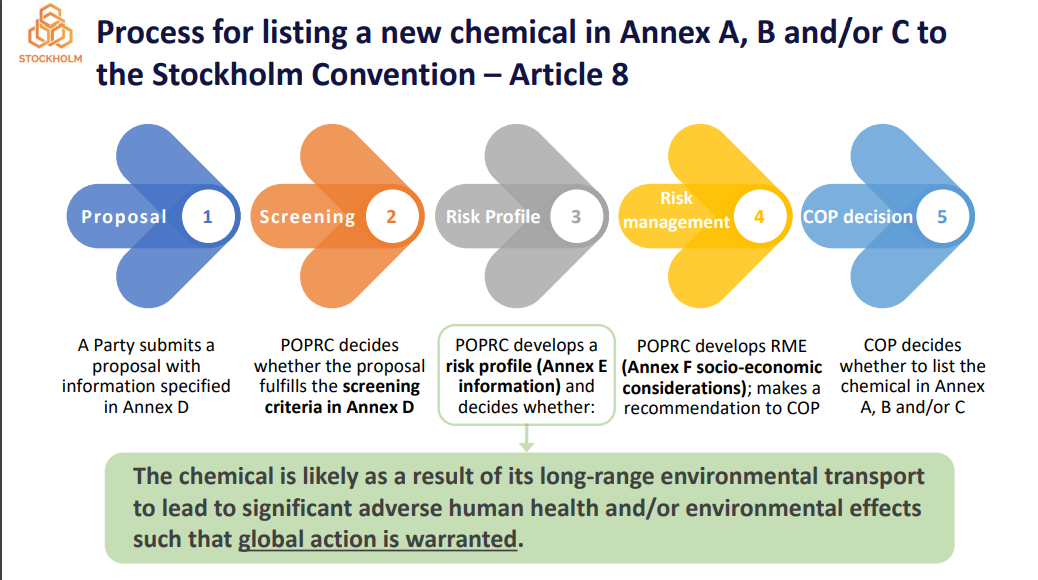
- The committee shall examine the proposal flexibly and transparently and also take into account all information in an integrative and balanced manner.
- The E stage tries to move the risk profile to the committee that will further look into the chemical exposure in local areas and determine if the chemical is a POP.
- The lack of full scientific certainty shall not prevent the proposal from proceeding. Any scientific uncertainty shall decide in a precautionary manner whether and specify related control measures.
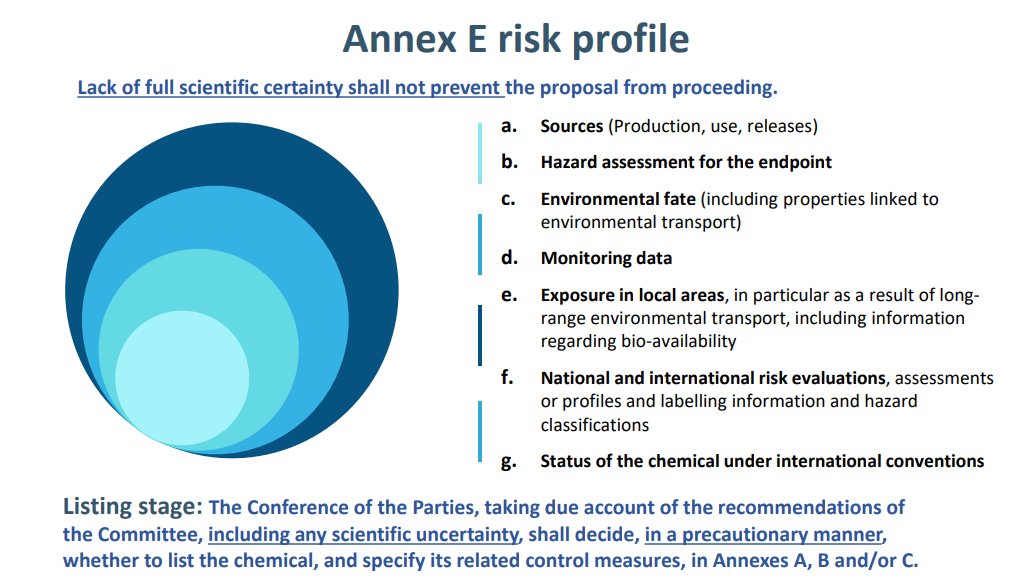
- A recently added plastic additive is UV-328, which has been looked at from they way in which the plastic debris can be transported across to the ocean and remote areas affecting human health and the environment through its exposure.
- It is essential to ensure transparency and traceability of chemicals in products, especially for industrial chemicals, throughout the life cycle and it is equally challenging for POPs already listed in Stockholm.
Experience from the Stockholm Convention

- There are 34 chemicals listed in the Stockholm Convention but the total could easily reach around 1,000.
- There are many other chemicals with adverse effects on human health and the environment that are not regulated by the Stockholm Convention or any other MEAs. They may be currently under review or there is not enough information to determine or no parties have submitted a proposal or do not meet the criteria for listing, which means that they are out of scope.
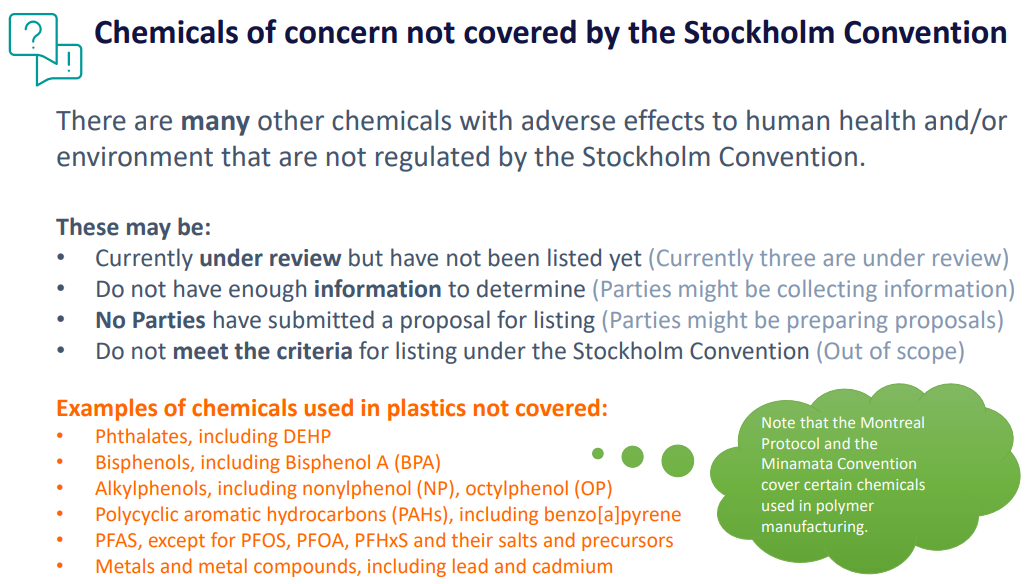
Outcomes of the Informal Intersessional Meeting on Problematic and Avoidable Plastic Products and Chemicals of Concern | Michelle TSCHIRREN | Head, Global Affairs Section, Federal Office for the Environment, Switzerland
- At INC-3, many member states flagged the need for substantial discussions on plastic products and chemicals of concern. Many member state and observer submissions asked for specific phase-outs of products and chemicals of concern.
- Existing MEAs need to be considered and MEAs should mutually support each other and not duplicate work.
- Intersessional work promoted by Switzerland follows UNEA resolution 5/14 which addresses plastic pollution by looking at the full life cycle and promoting circularity.
- Our objective is to enable a discussion on how to best address problematic and avoidable plastic products and chemicals of concern in the future treaty.
- The objective of the Informal Intersessional Work session was to discuss concrete ways to address problematic and avoidable plastic products and chemicals of concern.
- Member states and experts participated in the Technical Expert Group Meeting held in Geneva in March 2024.
- Around 65 experts from around the world joined the discussion.
- The prepared input paper diffused alongside the invitation to the meeting included possible draft articles for the draft treaty, an initial product list, and a placeholder for an initial chemicals list. This paper is not the official position of Switzerland and does not prejudge the ongoing negotiations.
- The concept discussed at the meeting revolves around three main components: concerns about certain problematic and avoidable products; chemicals of concern in these products; and required information on plastic products on the market.
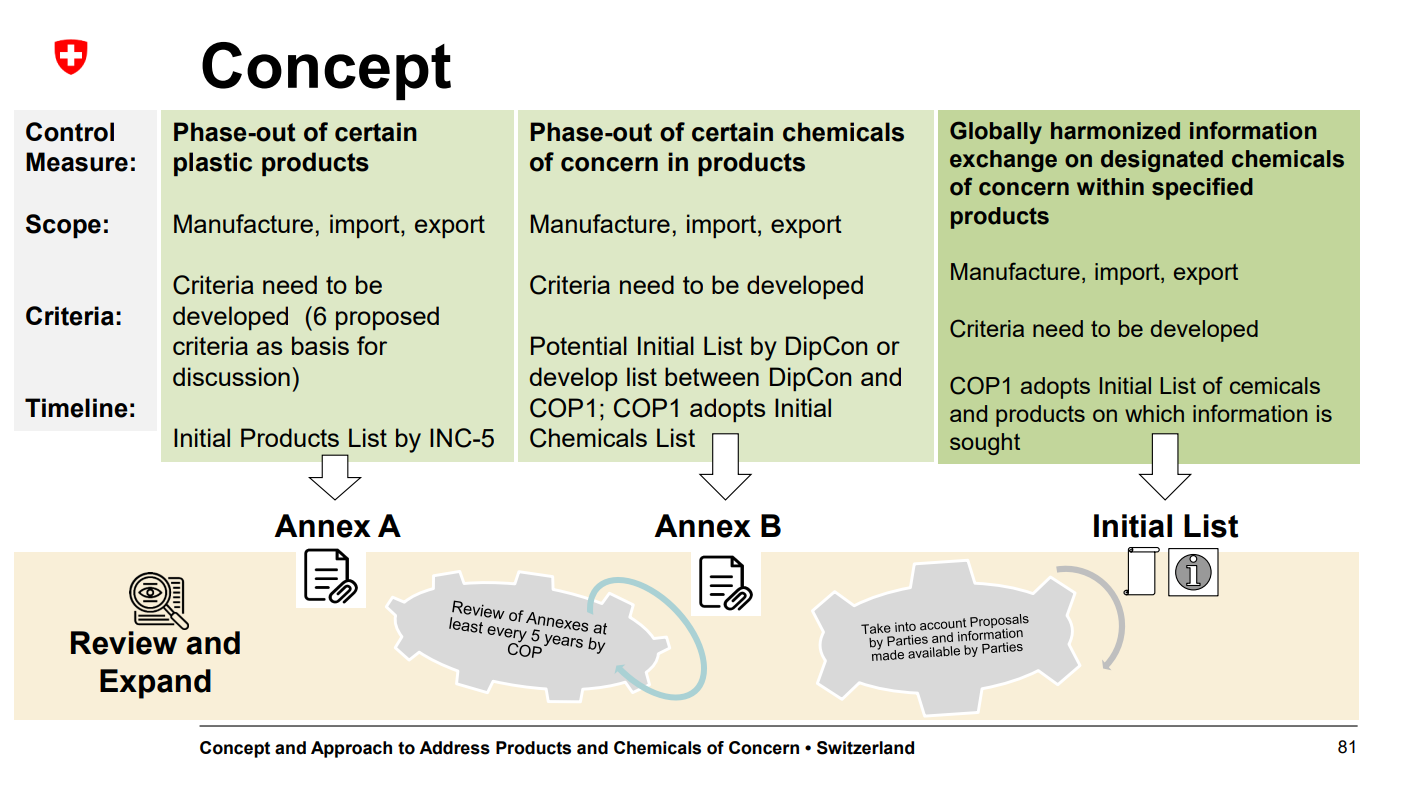
- Those identified as problematic and avoidable products are those that should not be on the market. The products will be on an initial list to be ready for INC-5 and based on generic criteria.
- For chemicals of concern in certain products, the criteria would still need to be further developed, recognizing the complexity of the issue. The initial list of these chemicals could be developed between the diplomatic conference and the first Conference of the parties, but earlier developments would be welcomed.
- Needed information on plastic products requires clarification on the kind of information to be included in it.
- Ideally, provisions for each component should be in the draft treaty.
- We must build on ongoing activities and ongoing efforts to tackle these challenges, such as existing initiatives and practices on the business side and existing national regulations, recognizing the limited negotiation time.
- We must think about how we can achieve our goals in a limited time and how to sequence the work. Careful prioritization of what can be done now and what can be further developed between DipCon and the first meeting of the COP is essential.
- The global lists will make the treaty effective as opposed to having just criteria and leaving it up to the national implementation.
- We should avoid fragmented actions that would compromise the effectiveness of the treaty.
- Recognizing the global list is essential for LBI’s effectiveness and may influence investors.
- The treaty must remain meaningful, hence there needs to be a mechanism to update the treaty with the lists of products, chemicals, and information when needed.
- The implementation of the global lists will differ for the various member states because they are not in the same situation.
- We still need to anticipate a time-limited exemption process for parties to implement control measures within a reasonable timeframe.

- The input paper was largely drawn from the criteria developed by the Global Plastic Pact Network, a public-private initiative focused on plastic packaging that has engaged 55 governments.
- The criteria of intentionally added microplastics was included in the list of problematic products given growing evidence of adverse impacts, government actions, and INC discussions.
State of Play on Chemicals and Polymers of Concern in the Treaty
Vito BUONSANTE | Policy & Technical Advisor, IPEN
- There is a broad agreement that this treaty should protect human health. Regulating these chemicals is a way to fulfill the health objectives of the treaty.
- The revised zero-draft of the plastics treaty attempts to address the full lifecycle of chemicals, going from listing chemicals of concern to the design of plastics products to issues related to chemical leaks in all phases.
- IPEN believes that the plastics treaty should:
- Have global and legally binding controls;
- Addressing chemicals in groups to avoid the risks of regrettable substitutions;
- Addressing both the “use” and the “presence” of the chemicals in the products. Many chemicals are used and are emitted in the lifecycle;
- Chemical controls should not be limited only to additives and be included in the treaty with an annex that can be updated;
- Establish criteria to define what qualifies as “chemicals of concern”;
- Establish an initial list of chemicals to restrict.
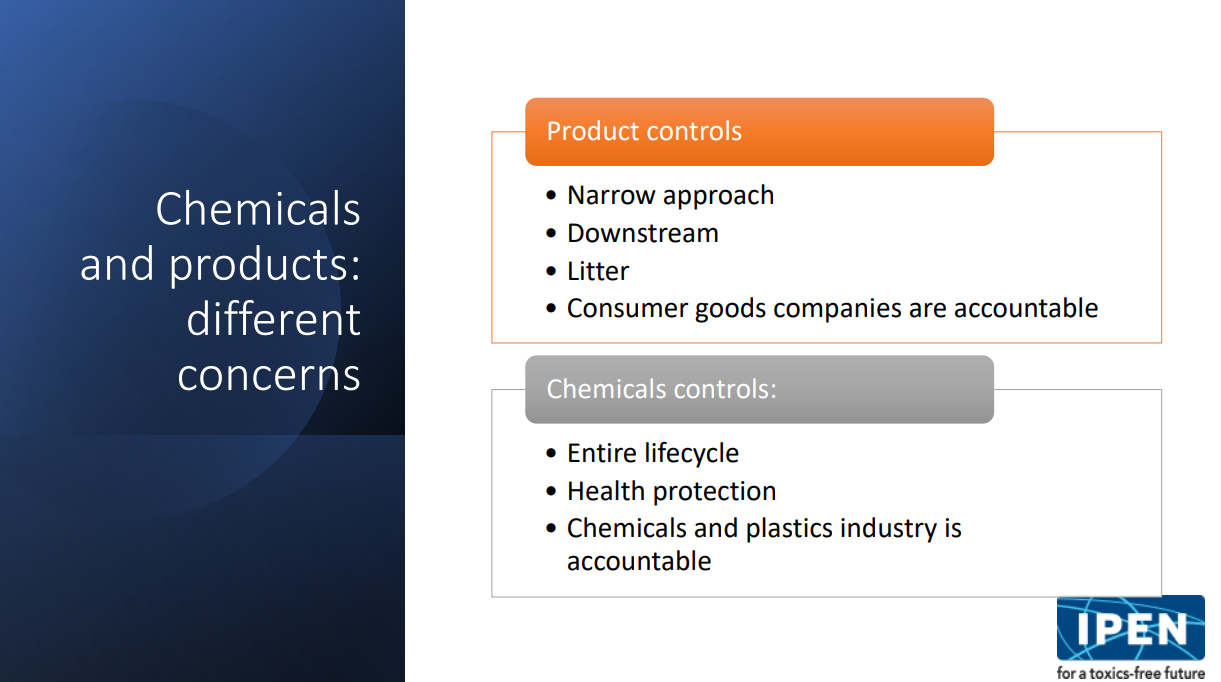
- If we want to tackle responsibility, we should go mainly to consumer goods companies to make them accountable for regulating chemicals or not, and during their entire life cycle, and thus following the treaty objectives.
Outcomes for chemicals by INC-5:

Open discussion
Q: If certain chemicals are bad, should their use be banned or restricted in all applications? Why just plastics?
Therese KARLSSON: Ongoing negotiations on a plastics treaty present an excellent opportunity to address toxic chemicals in plastics as chemicals are abundantly used with little control and transparency. That does not mean it is not important to address toxic chemicals in a lot of other contexts. Under the Stockholm Convention, there are also mechanisms for addressing chemicals in other contexts. The focus on plastics is related to the ongoing plastics negotiations.
Valentina SIERRA: The limit is given by the UNEA 5/14 mandate, which asks to addresses plastic pollution. We can also discuss the chemicals that are used in the production and that are not part of the product. We have a very valuable opportunity of addressing all these issues because we are negotiating a very complex issue, we are facing an urgent crisis that we need to address. The BRS conventions can be strengthened and have a lot of potential to continue being developed. Under the INC negotiations, we have the unique opportunity to address specifically this issue so we need to use this opportunity appropriately. We must address all hazardous chemicals, avoidable and problematic products, and the polymers of concern.
Kei OHNO WOODALL: We need a system change. The necessary mechanism will ensure that other chemicals also used in plastics can be identified, traced, and ensure that they do not go to the recycling stream. The mechanism could be easily applied to other materials like paper or glass. This is also an opportunity to strengthen the sound management of chemicals and waste as a whole, and positively impact the work of the Stockholm Convention for the identification of POPs.
Q: What are the avenues for youth engagement when it comes to plastics and health?
Vito BUONSANTE: The UN General Assembly resolution on the right to a healthy environment can be applied through access to information, public participation and access to justice. When it comes to chemicals, the best way to engage the youth is to implement transparency mechanisms to let them know what they are exposed to and then make them part of the implementation of a treaty. We can implement measures like participation in making national implementation plans and assess what are the impacts on young generations.
Q: What benefits do plastics bring to healthcare?
Andrea GORE: Phthalates are very widely used in the medical community. We cannot keep substituting one phthalate for another. Both the private sector and governments are trying to develop new materials to make IV tubing that do not contain endocrine disruptors. These materials are often tested in a way that will not necessarily reveal endocrine disruption.
Michel TSCHIRREN: To discuss and address the interlinkages of environment and health we must use existing expertise and institutions. This includes use the of synergies with existing chemics and waste processes or the World Health Organization.
Geneva is an important cluster of environmental and health governance. It brings actors together to work jointly and will ensure that the plastics treaty provisions will use that expertise, to ensure mutual supportiveness and synergies and not hierarchies between existing instruments.
Highlights
Video
Live on Webex.
Documents
- Presentations made during the event
- Plastics, EDCs and Health | Flaws J., Damdimopoulou P., Patisaul H. B., Gore A., Raetzman L., Vandenberg L. N. | The Endocrine Society and IPEN, 2020
- Endocrine Disrupting Chemicals: Threats to Human Health | Gore, A.C., La Merrill, M.A., Patisaul, H.B., and Sargis, R. | The Endocrine Society and IPEN, February 2024
- Troubling toxics: eliminating harmful plastic chemicals through the plastics treaty | IPEN, April 2023
- Frequently Asked Questions on Plastics and Chemicals | IPEN, March, 2024
